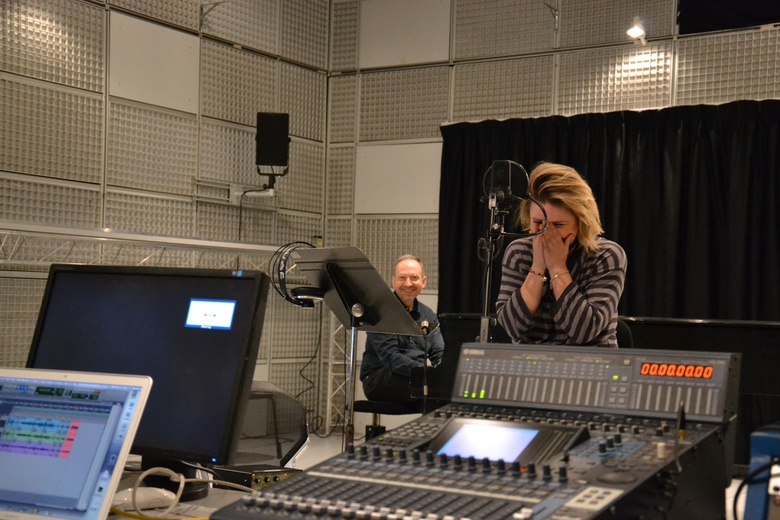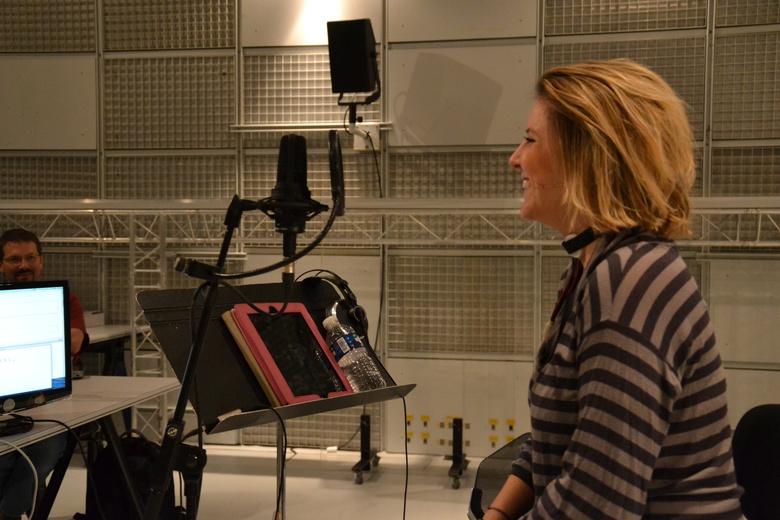14h15- 17h15
En entrée libre, dans la limite des places disponibles
L’objectif du projet ANR ChaNTer* était la réalisation et la mise en situation musicale de systèmes de synthèse de voix chantée de haute qualité en envisageant deux modes de synthèse : un mode « chant à partir du texte » dans lequel l’utilisateur doit saisir le texte à chanter avec les notes de la partition que la machine transforme en son (en temps différé), et un mode « instrument chanteur » dans lequel le musicien utilise des interfaces en temps réel pour contrôler le synthétiseur de chant comme pour un instrument. Le projet a prêté une attention particulière à la modélisation de différents styles vocaux.
Lors de cette journée, nous présenterons les grandes lignes des recherches effectuées dans ce projet, les synthétiseurs développés – le logiciel ISiS (Ircam Singing Synthesis), qui sera distribué aux membres du Forum Ircam en mars 2018, et deux instruments chanteurs : Vokinesis et Cantor Digitalis (distribués sous licence CeCILL) – et l’impact de ces recherches sur la création musicale, à travers les travaux de composition réalisés grâce aux résultats du projet.
*ANR-13-CORD-0011 / Partenaires : LIMSI (coordinateur), Acapela, Dualo.
 Séance d'enregistrements avec Marlène Schaff et Raphaël Treiner
Séance d'enregistrements avec Marlène Schaff et Raphaël Treiner Séance d'enregistrements avec Marlène Schaff et Raphaël Treiner
Séance d'enregistrements avec Marlène Schaff et Raphaël Treiner Séance d'enregistrements avec Marlène Schaff et Raphaël Treiner
Séance d'enregistrements avec Marlène Schaff et Raphaël Treiner Séance d'enregistrements avec Marlène Schaff et Raphaël Treiner
Séance d'enregistrements avec Marlène Schaff et Raphaël Treiner Séance d'enregistrements avec Marlène Schaff et Raphaël Treiner
Séance d'enregistrements avec Marlène Schaff et Raphaël Treiner Séance d'enregistrements avec Marlène Schaff et Raphaël Treiner
Séance d'enregistrements avec Marlène Schaff et Raphaël Treiner
Programme
14h15-14h30 | Le projet ChaNTeR : introduction, histoire et état de l'art en synthèse de la voix chantée
Christophe d'Alessandro, directeur de recherche CNRS, équipé LAM de l'Institut Jean Le Rond d'Alembert de Sorbonne Université
Cet exposé présente le projet ANR ChaNTeR et donne un aperçu de l’histoire de la synthèse de la voix chantée et de ses enjeux techniques et musicaux.
14h30-15h30 | Le logiciel ISiS : synthèse du chant et modèles de style
Axel Roebel, directeur de recherche Ircam et responsable de l'équipe Analyse et synthèse des sons ; Luc Ardaillon, ancien doctorant à l'Ircam
Le logiciel ISiS (Ircam Singing Synthesis) est le résultat principal des recherches effectuées par l’Ircam dans le contexte du projet ChaNTeR. Nous expliquerons les techniques principales qui sont utilisées dans ISiS pour la synthèse de chant à partir d'un texte et d'une mélodie, et présenterons les résultats de nos recherches sur le contrôle du style de chant à l'aide de modèles appris à partir d'enregistrements de chanteuses et chanteurs français connus comme Édith Piaf.
15h30-15h45 | Pause
15h45-16h15 | L'opéra I.D. : une voix de synthèse dans le contexte de la création
Arnaud Petit, compositeur
Une voix chantée artificielle, qui est celle d’un personnage lui-même artificiel et protagoniste d’un opéra, c’est l’une des particularités de l’opéra I.D., composé par Arnaud Petit et écrit par Alain Fleischer. Comment cette voix/personnage cherche sa place dans le dispositif de l’opéra (puissamment éprouvé depuis plusieurs siècles), c’est ce qui sera abordé dans cette présentation. I.D. a été créé au CDN Théâtre du Nord en octobre 2017, en collaboration avec le CIRMMT, l’Ircam, l’Inria, le Théâtre de l’Omnibus, Le Fresnoy, Studio national des arts contemporains et l’ensemble Les Siècles.
16h15-16h45 | La composition du vibrato : méthodes de représentation et transformation
Marta Gentilucci, compositrice
L’extension de la voix chantée a été au coeur de la résidence de recherche de Marta Gentilucci en 2017 à l’Ircam, et plus particulièrement la micro/macro évolution dans le temps du vibrato, du trémolo et des techniques étendues. La présentation montrera les idées compositionnelles à l’origine de la recherche et des exemples sonores des techniques développées.
16h45-17h15 | Les instruments de synthèse de la voix
Christophe d'Alessandro, directeur de recherche CNRS, équipé LAM de l'Institut Jean Le Rond d'Alembert de Sorbonne Université
Les instruments de synthèse de la voix ont été le deuxième volet de la recherche du projet ChaNTeR. Deux instruments chanteurs Vokinesis et Cantor Digitalis sont présentés (1er prix de la compétition Margaret Guthman pour les nouveaux instruments de musique en 2015). Des exemples de concerts accompagneront l’exposé.


